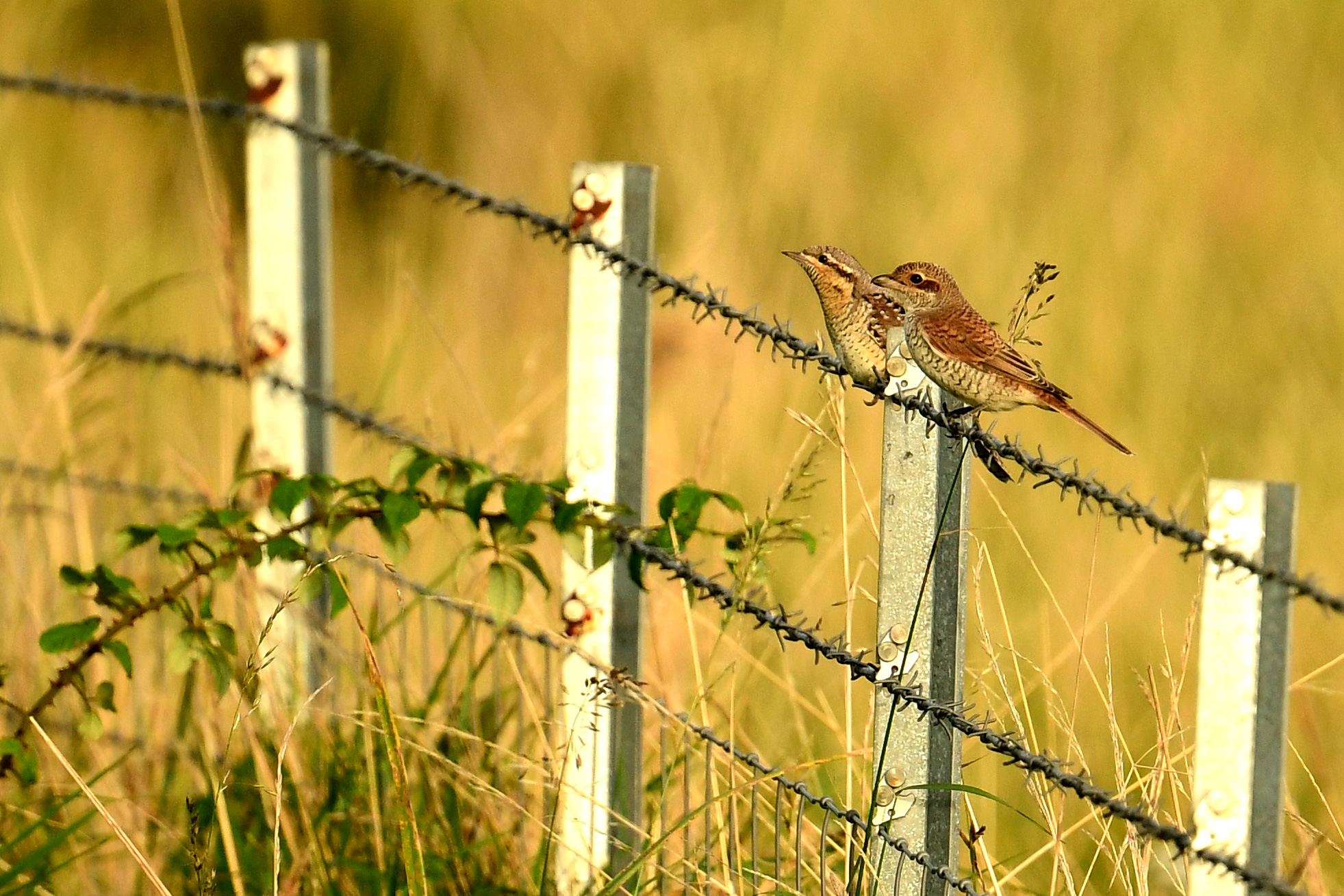Star letter: Perching pair
Last September, my local birding group alerted me to a Wryneck and a juvenile Red-backed Shrike at Abbot’s Cliff. I managed to observe the Red-backed Shrike for long periods but only briefly saw the Wryneck. I really wanted to see the Wryneck again; it is a beautiful bird steeped in mysticism that sadly no longer breeds in the UK. Anyway, I decided to try my luck again, and after work I popped up to Abbot’s Cliff. It was a lovely evening and me and three others watched the Red-backed Shrike flying to and from the ground together. Secretly, I was hoping to see the Wryneck again, but hey, this was still fantastic.
Then something amazing happened – the Red-backed Shrike flew down again in the grass then reappeared, only it wasn’t the Red-backed Shrike, it was a Wryneck! I couldn’t believe my eyes. Then, a few seconds later, the Red-backed Shrike joined it. It was one of those moments I will never forget. The last of the sun’s rays were illuminating both birds and although my heart was pounding, I managed to steady myself and capture the special moment. Sometimes all the stars line up when you least expect it, but that is the joy of birding.
Mike Fitch
Ed: What makes Mike’s photo particularly poignant is that both the Red-backed Shrike and the Wryneck were both lost from the UK as regular breeding birds in relatively recent history. Both these birds still come to our shores en route between their nesting and wintering grounds. Wrynecks occasionally hold territories, and Red-backed Shrikes have nested sporadically, successfully raising chicks in Dartmoor between 2010 and 2013 and Shetland in 2015 and 2020.
This photo reminds us of the reality of the conservation challenges we face, and should motivate us further to reverse the declines we are seeing in the UK’s wildlife.
City surprise
I found the item in the Spring/Summer mag concerning the gardens of Lambeth Palace so uplifting. Despite being born in London 82 years ago, I had no idea the palace had such a gem. I wonder, could the lamppost story of the same issue be showing the way to Narnia?! That would be a spiritual lift!
Charles Stammers
Close encounter
I regularly birdwatch on the Norfolk marshes. Last autumn I got a stone in my shoe, so sat down over the edge of the track to remove it. I put my hand down for balance and touched something warm in the vegetation. A huge, ugly bird reared up beside me, making me nearly jump out of my skin. I scrambled up to watch it fly away. It had a large wingspan and looked rather like a heron, but brown. Yes! It was a Bittern! My foot was bleeding, but as I limped on I didn’t care because that was a once-in-a-lifetime sighting of a very secretive bird. Wonderful!
Sue Gladstone
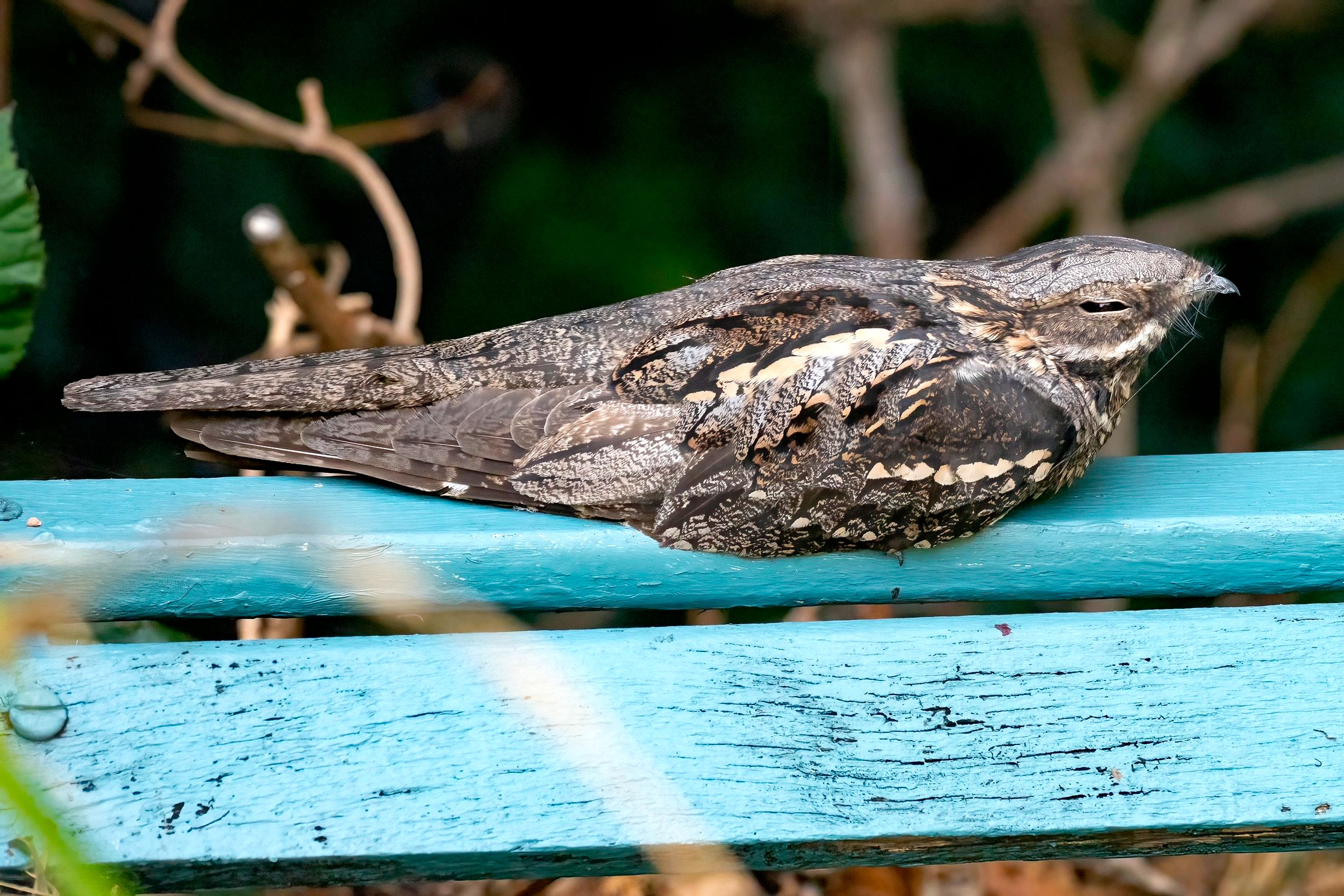
Nightjar found in Steve’s garden. Photo: Steve Knox
Unlikely visitor
I was totally shocked to discover this Nightjar about three metres away as I was wandering around my garden. We live in Edmonton, London. This is a very built-up area which makes it all the stranger. When I had stopped shaking, I slowly retreated to get my camera and managed to get some pics from a greater distance, so as not to disturb it, but it did fly over my fence into another garden. I was lucky enough to see it once again that night as it headed south to continue what I assume to be its migration.
Steve Knox
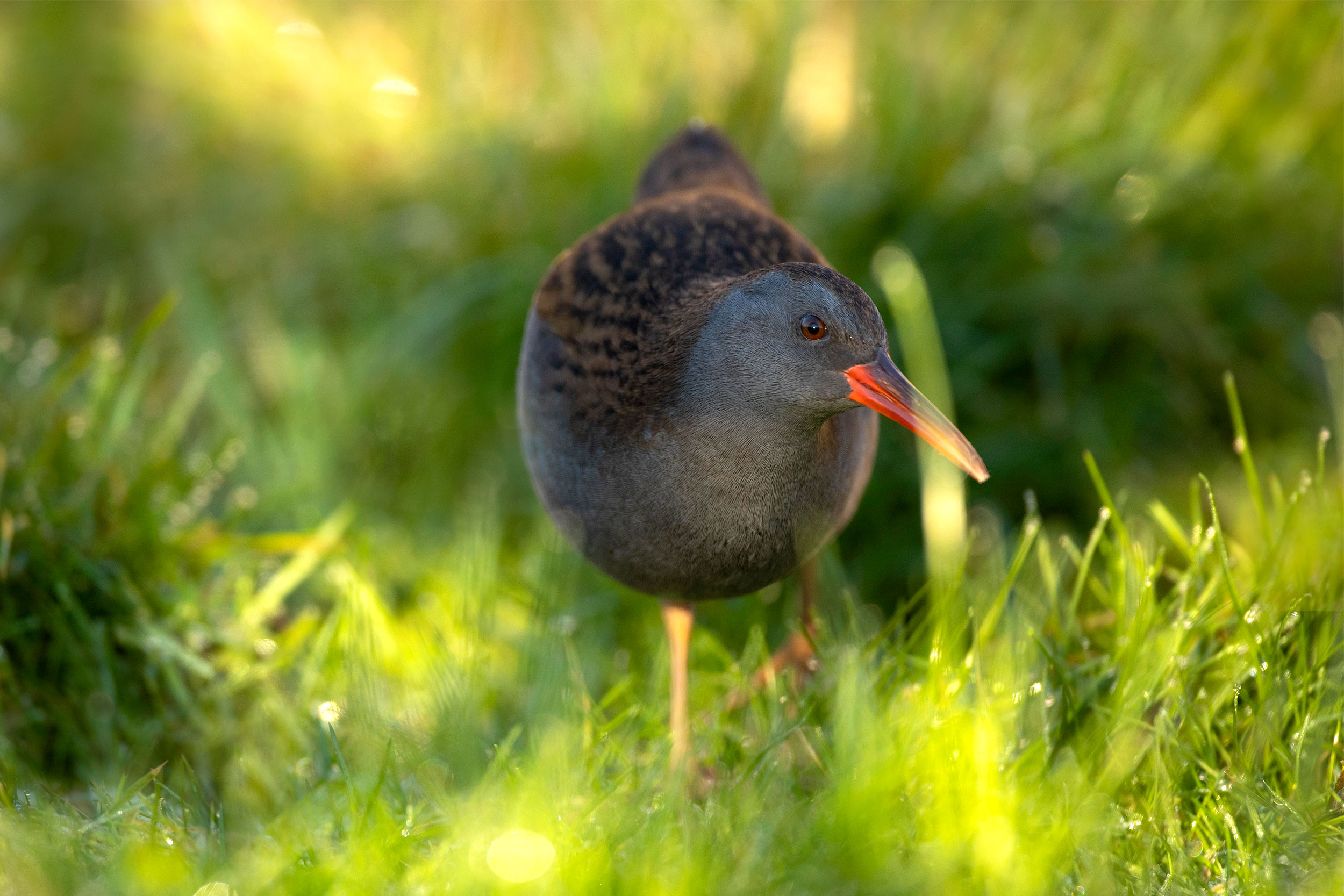
Water Rail. Photo: Ben Andrew (rspb-images.com)
Not so shy
On 18 March I was walking along a narrow footpath in the Suffolk village of Kedington. The path was bordered by the Stour on one side and woodland on the other. Ahead, I could see a work party of volunteers making repairs to the path. One raised his hand as I approached and then pointed to the ground. Unbelievably, a Water Rail was pottering about between the feet of the workers who were being careful not to tread on it. It showed no sign of distress and was unfazed by the proximity of humans. What could explain this odd behaviour? Well, I read up about the species and found out that some Water Rails can be amazingly tame. According to the volunteers it had been on the path for several minutes before I arrived and was still there when I left 10 minutes later. Shortly after, it wandered into the undergrowth and was not seen again.
Shaun Jarvis
New generation
At Christmas we bought our first granddaughter, Mila, nearly aged one, the RSPB woodland tree house with the little animal finger puppets. She really loves it, especially the owl, and plays with it a lot. It’s really well made and has lots of detail. Having been members of the RSPB for many years, we’re now looking forward to encouraging her to appreciate wildlife and birds. We plan on visiting our local reserves at Minsmere, Strumpshaw, Buckingham Marshes and Surlingham Church Marsh with her, as we did with our daughter Jenny, who worked at Minsmere as a young volunteer.
Mandy and Norman Medler
High drama on the high wires!
Our back garden has several wires strung above it, delivering various services. These were the setting for an extraordinary event over the Christmas period, involving no fewer than five species of birds. The centre of attention, amidst much excitement, was a Great Tit. He was making himself look twice his size by stretching out his wings and tail feathers, squawking incessantly while hopping around – just like a bird of paradise! It appeared to be a defensive display as, occasionally, one of a pair of Nuthatches would fly at him and attack. Three Blue Tits on a higher wire were flitting up and down, manifestly part of the action, and a female Chaffinch, further away and with head feathers erect, was clearly also excited by proceedings. Occasionally another Great Tit, probably the main actor’s mate, would appear to join her man in an apparent show of solidarity before retreating to the eaves. Lastly, at the bottom of the garden, a Goldfinch was observing these antics from a safe distance. In 65 years of birdwatching, I’ve never witnessed anything like it!
Jeanne Walsh
Ed: You are right, Jeanne – the Great Tit’s display does sound defensive. Over winter they can show aggressive displays related to food, including having wings raised and tail spread, either staying in this pose or moving towards the threat.
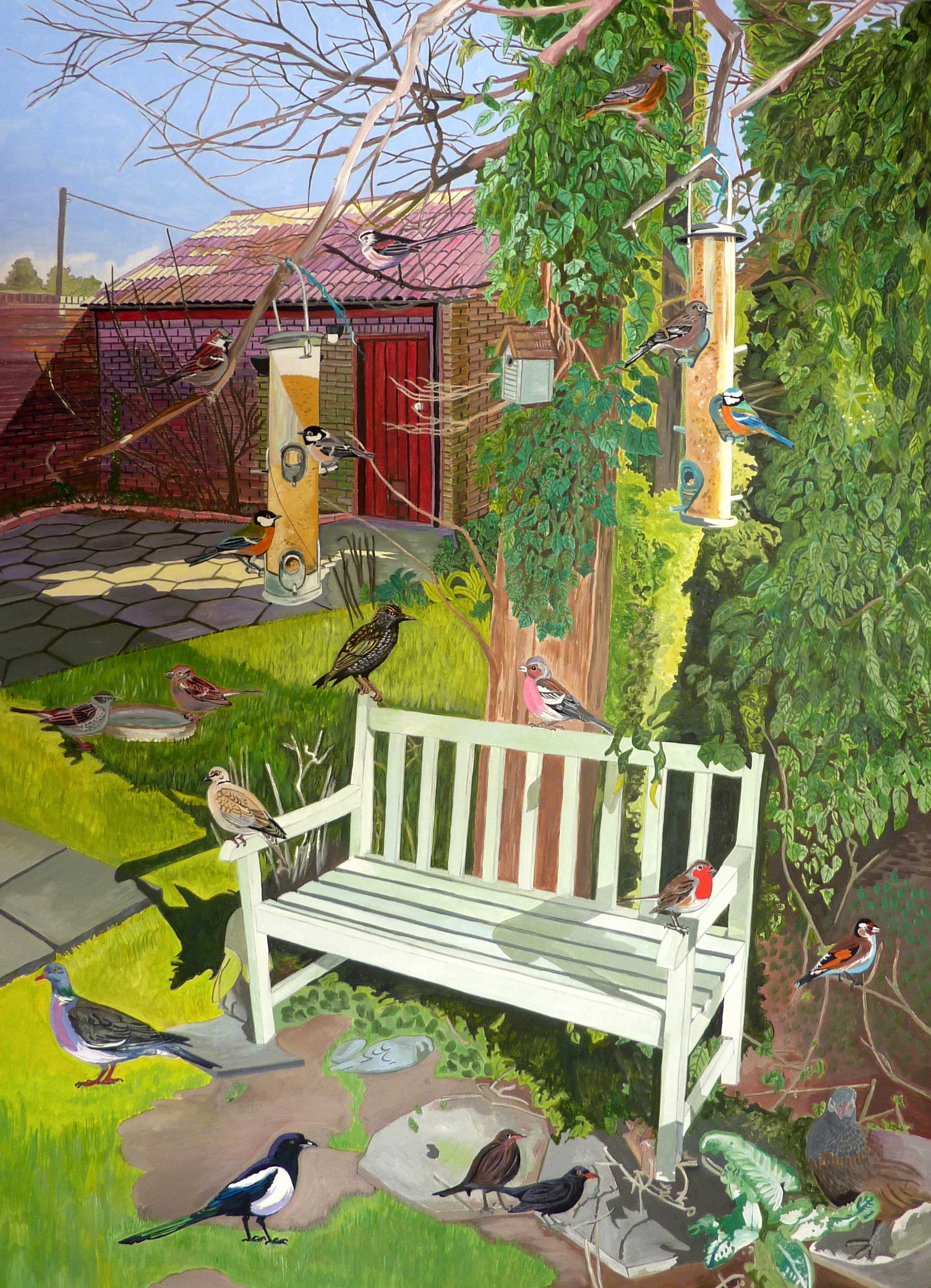
David’s painting depicting his Big Garden Birdwatch. Photo: David P Housden
Natural inspiration
I am an artist living in the Fens. I took part in the Big Garden Birdwatch this year and felt inspired to paint my experience. I intentionally included all the 18 birds that you could have potentially seen on the day.
David P Housden

Water vole eating a dragonfly. Photo: Martin Hancock
An unusual snack
I thought you might like to see this photo of a Water Vole eating a dragonfly. I took this at RSPB Minsmere back in October.
Martin Hancock
Ed: Although their diet mainly consists of grasses, bulbs and water plants, Water Voles can sometimes feed on dead water snails or even fish for a little bit of protein. This is recorded more so in the females when they are feeding young.

Have your say
Send us your letters. The star letter wins a pair of RSPB 8×32 Avocet binoculars from our Viking Optical range. Waterproof, nitrogen-filled and robust. Send your letters to RSPBmagazine@rspb.org.uk.

You might also like
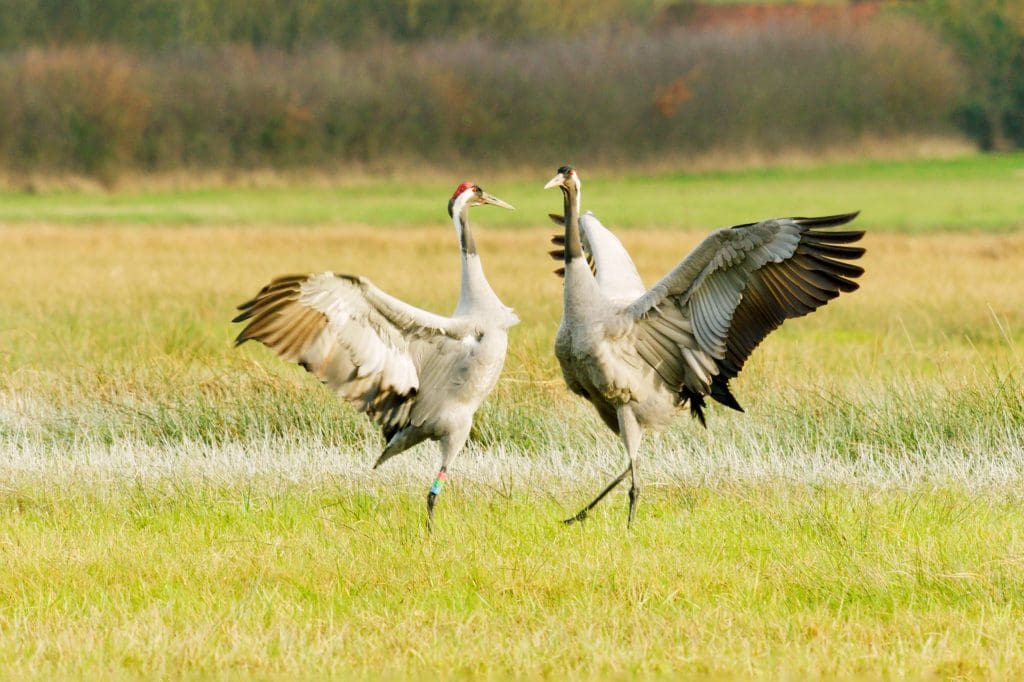
Cranes on camera
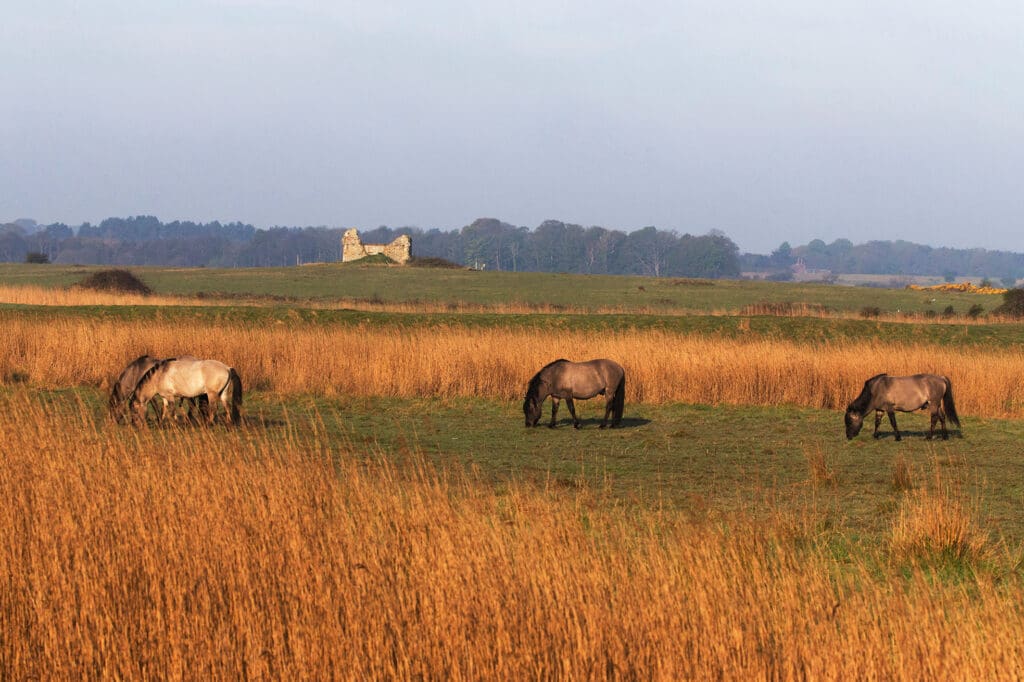
3 nature reserves to explore in summer/autumn 2024


